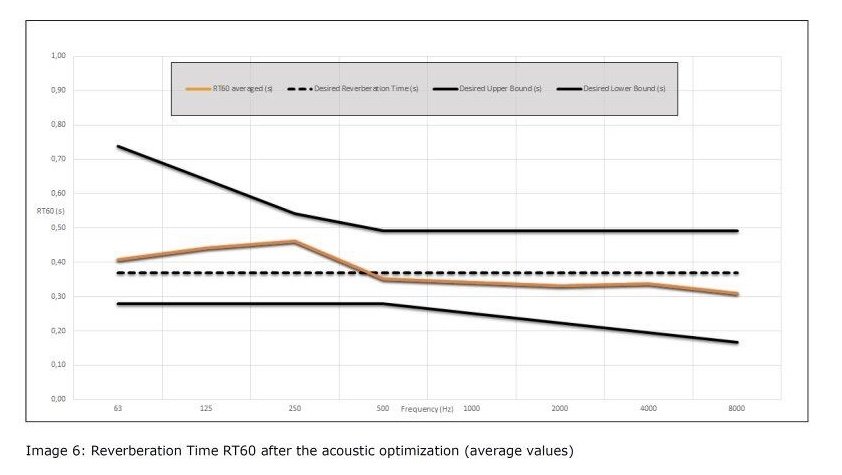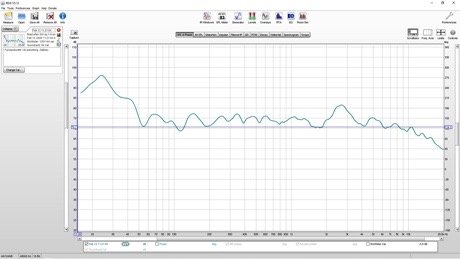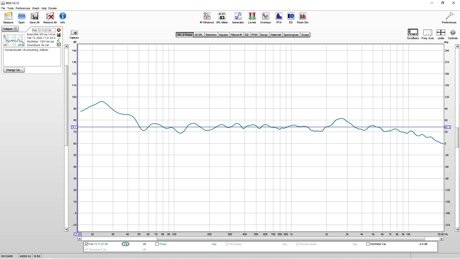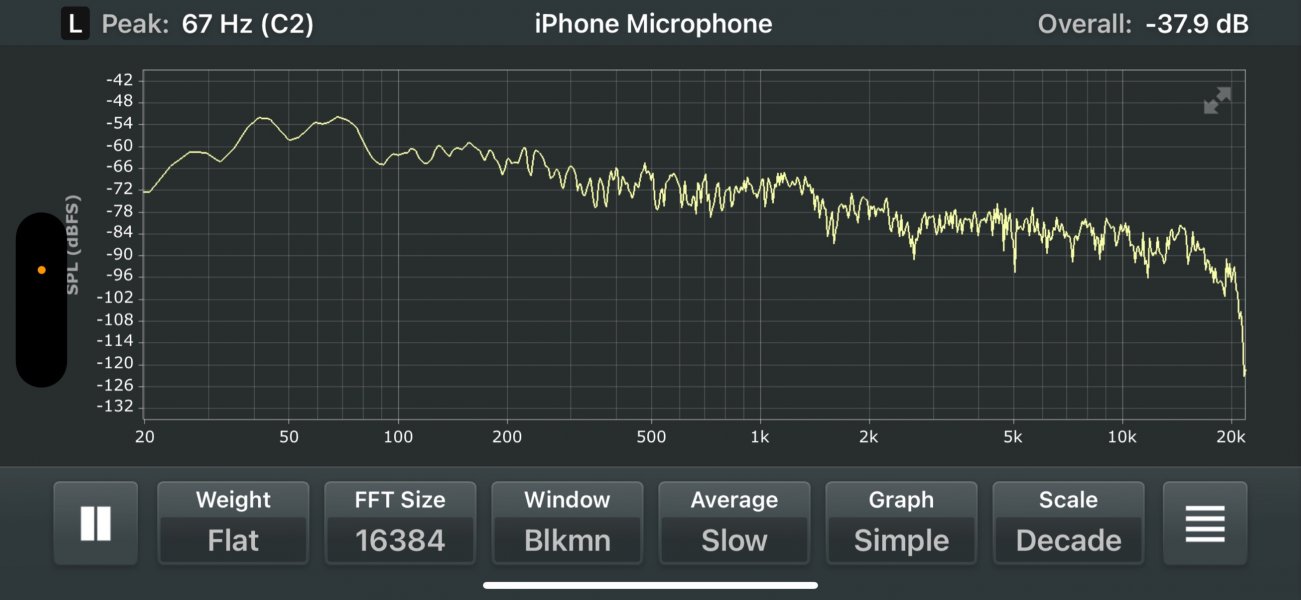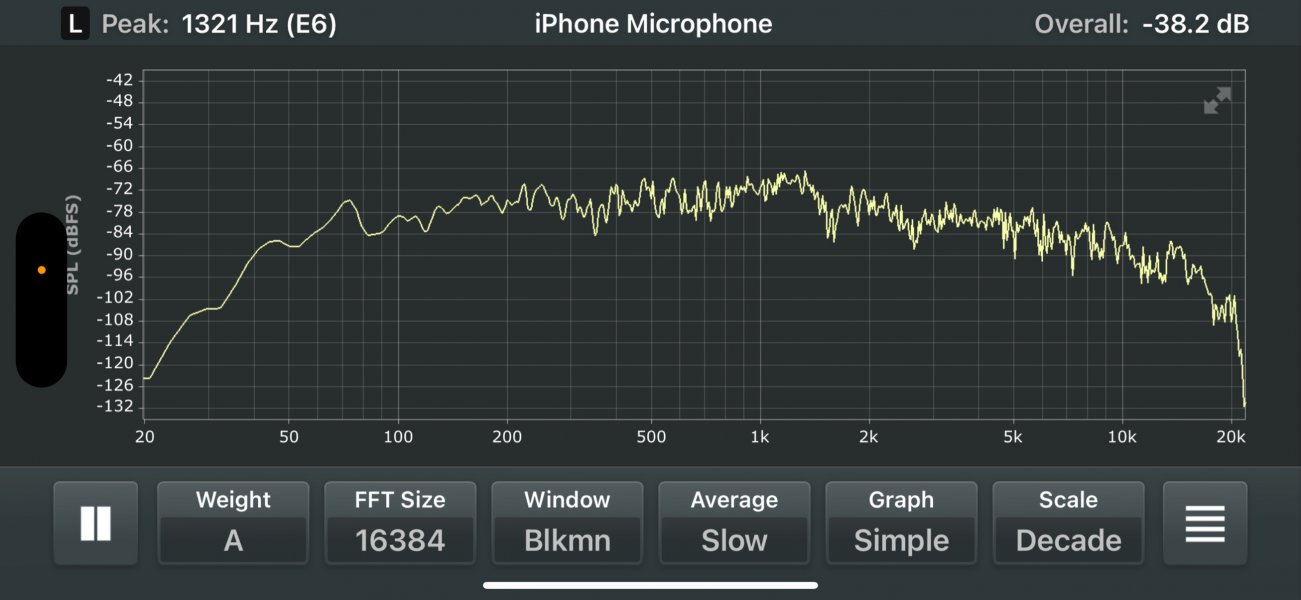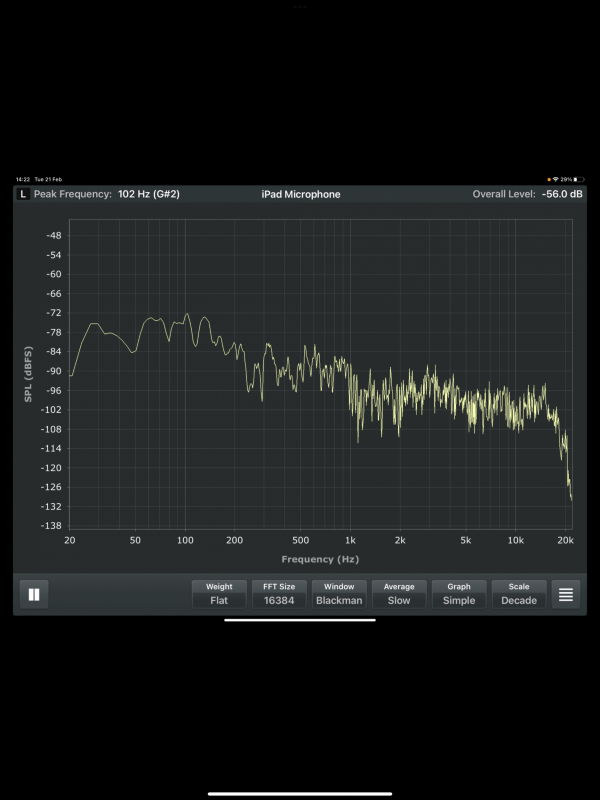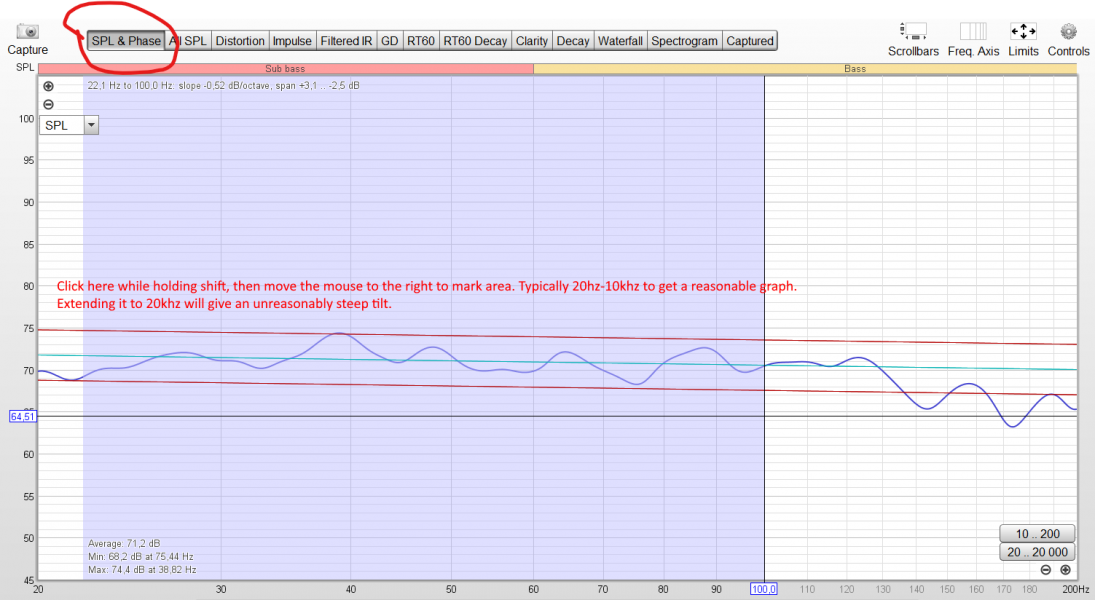Last edited:
Post Your Frequency Response Curve!
- Thread starter Ron Resnick
- Start date
You are using an out of date browser. It may not display this or other websites correctly.
You should upgrade or use an alternative browser.
You should upgrade or use an alternative browser.
As I said, I’m no acoustician, but I have to venture it is indeed the room, as the crude graphs I posted are also Alsyvox Botticelli X, and my bass response is considerably different. Botticelli (if my memory serves me) measure down only 3db @ 22hz, remarkably low for a panel.Alsyvox speakers
This was a year ago when my EE friend was helping me with a bass sound I didn't like.
Top or left graph is where we started and ended after making adjustments in phase, crossover point, volume and the number of subs I was using. None of it made a real difference.
The lower or right graph was, after we moved the sub on the left wall 4" closer to the face of the left speaker so it was the same distance as the right speaker.
When I had placed the subs, I centered them measuring the left and right wall length. I had forgotten that in the old sunroom I had turned into my listening room, the left wall was 8" longer than the right wall that was part of the original house.
The improvement you see is only from moving the left sub 4" to be the same distance from the left main as the right sub is from the right main speaker. We were both stunned with the difference. It was way to simple to create that change.
Top or left graph is where we started and ended after making adjustments in phase, crossover point, volume and the number of subs I was using. None of it made a real difference.
The lower or right graph was, after we moved the sub on the left wall 4" closer to the face of the left speaker so it was the same distance as the right speaker.
When I had placed the subs, I centered them measuring the left and right wall length. I had forgotten that in the old sunroom I had turned into my listening room, the left wall was 8" longer than the right wall that was part of the original house.
The improvement you see is only from moving the left sub 4" to be the same distance from the left main as the right sub is from the right main speaker. We were both stunned with the difference. It was way to simple to create that change.
Attachments
My understanding is, if you can keep it within 10db you are doing good.I thought that my curve was not good, made with Rew (sweep) and Minidsp umik-1 mic :
View attachment 104804
While I think that is true. Usually, I think it applies to curves wirh very little smoothing. Once you apply 1/2 or 1/3 or even 1/6 smoothing, most curves would be within 10dB and may not be fully representative of what you’re really hearing.My understanding is, if you can keep it within 10db you are doing good.
ultimately for people like me or Benito, the solutions are either to move the listening position to get smoother bass and then reposition/toe in/out the speakers to get the treble back in line, or use DSP to smooth out the bass or live with what we’ve got. Acoustic treatment helps but is trickier to deploy than most people think unless you’re just trying to get the reverb RT60 down.
Needed to try this with my modest system. I believe this is consistent with what I am hearing. Have a little work to do…….
What work do you think you have to do?
Isn’t Flat used for speaker measurements ie in an anechoic chamber. We are after all measuring the room and not the speaker. Also we should all be using uncorrelated pink noise if testing stereo (correlated for single speaker?)A weighting is used for noise and general sound level measurements, emulating the ear sensitivity. It is useful when you want to show a single figure, not spectral data. Flat (no weighting) should be used for speaker analysis.
Speaker setup guys tell us what you use?
A flat response in an anechoic chamber is desirable. I am not sure what that has to do with settings on measurements. I would go with flat for in-room measurements but the trend for the response should be similar to what you got.Isn’t Flat used for speaker measurements ie in an anechoic chamber. We are after all measuring the room and not the speaker. Also we should all be using uncorrelated pink noise if testing stereo (correlated for single speaker?)
Speaker setup guys tell us what you use?
I should have said Flat weighting rather than a flat target curve. I agree that a downward slope is desirable (Harman curve).A flat response in an anechoic chamber is desirable. I am not sure what that has to do with settings on measurements. I would go with flat for in-room measurements but the trend for the response should be similar to what you got.
And for completeness sake here’s my Flat result from yesterday indicating comb filtering due to poor time alignment of the tweeter I suspect.
Attachments
In my expirience a anechoic chamber is not necessary in LS design .
I have done many in room measurements by placing the speakers in several different spots and perform measurements.
Under lets say 400 hz they are very much influenced by the room .
And so what if a LS measures flat in the bass in a anechoic chamber , usually such a design sounds lean .
As stated already its a combination of art / expirience and measurements.
I have done many in room measurements by placing the speakers in several different spots and perform measurements.
Under lets say 400 hz they are very much influenced by the room .
And so what if a LS measures flat in the bass in a anechoic chamber , usually such a design sounds lean .
As stated already its a combination of art / expirience and measurements.
Still not bad as this looks unsmoothed. It looks like your declination with increasing frequency goes a bit more in steps (200-1K, 1K-5K, 5-15K) with a kind of plateau in each range. Do you find the highs a bit 'phasey' in that you can't move your head around too much or there would be some shifts in the image location? I had this effect rather strongly with a pair of AudioStatic ES100 electrostatic panels due to a "Venetian blind" effect due to the width of the panels.I should have said Flat weighting rather than a flat target curve. I agree that a downward slope is desirable (Harman curve).
And for completeness sake here’s my Flat result from yesterday indicating comb filtering due to poor time alignment of the tweeter I suspect.
In my expirience a anechoic chamber is not necessary in LS design .
I have done many in room measurements by placing the speakers in several different spots and perform measurements.
Under lets say 400 hz they are very much influenced by the room .
And so what if a LS measures flat in the bass in a anechoic chamber , usually such a design sounds lean .
As stated already its a combination of art / expirience and measurements.
You can get pretty far with in-room measurements, but anechoic or alternatively outdoor measurements are necessary to validate response / document a clean response, especially below 400hz or so as you mention.
What is the correct response anechoically will depend on the loudspeaker design to some extent, and also recommended wall distance, reference listening angle, etc.
The theory / science indicates that a flat anechoic response is desirable. What's even more important is that it is smooth with limited deviation from whatever target curve you are designing for. In my experience a slight lift in the bass/midbass (1-3dB) anechoically will give the most natural in-room result.
To some extent yes, I sit rather close, 14’ and the room is small and narrow. As it’s only me in the sweet spot it doesn’t bother me at all.Still not bad as this looks unsmoothed. It looks like your declination with increasing frequency goes a bit more in steps (200-1K, 1K-5K, 5-15K) with a kind of plateau in each range. Do you find the highs a bit 'phasey' in that you can't move your head around too much or there would be some shifts in the image location? I had this effect rather strongly with a pair of AudioStatic ES100 electrostatic panels due to a "Venetian blind" effect due to the width of the panels.
I feel that the 60-70hz range is a little “thick”. I’d like to smooth it out more, but may not be able too given my room constraints.What work do you think you have to do?
I feel that the 60-70hz range is a little “thick”. I’d like to smooth it out more, but may not be able too given my room constraints.
Perhaps heresy here, but the area below, say, 100-200hz can be easily improved by EQ/DSP.
What filter did you apply to the Graph please (so I can replicate)?Not following the suggested approach but daring to post anyway. Ideally you should look in to REW (Room EQ Analyzer) for measurements, this will give you more accurate / detailed measurements.
Here is my dedicated listening space:
View attachment 104697
And how did you get the 2 red lines showing range?
Without knowing your room dimensions (and listening position and speaker positions), it's hard to say. Sometimes if the resonance is due to front and back wall, you can in theory put up a lot of thick 4" absorption panel all over the wall to see if that helps. If it's between ceiling and floor, treatment for the ceiling to alter the distance between ceiling and floor might help. Another option is to buy a tunable Helmholtz resonator like Vicoustic Vari-Bass Ultra and tune it to the specific frequency you want to absorb but usually these only work for very narrow frequency bands and you have to place them quite precisely so you really need to know where the extra 60-70Hz is coming from first and probably demo one of these traps at the location where the 60-70Hz is loudest and see how well they work. Once again, you may need several of them.I feel that the 60-70hz range is a little “thick”. I’d like to smooth it out more, but may not be able too given my room constraints.
The thickness btw is probably not solely coming from the increased dB. This is why it's better to use REW to measure to see what the RT60/waterfall plot looks like because it is likely that there is a resonance that takes a long time to decay. Sometimes you put up traps and the frequency response measurements don't change much but you can clearly hear quite a dramatic change because that frequency is no longer echoing around the room as much.
Similar threads
- Replies
- 4
- Views
- 4K
- Replies
- 26
- Views
- 29K
- Replies
- 85
- Views
- 73K
- Replies
- 4
- Views
- 39K
- Replies
- 404
- Views
- 164K
| Steve Williams Site Founder | Site Owner | Administrator | Ron Resnick Site Owner | Administrator | Julian (The Fixer) Website Build | Marketing Managersing |


